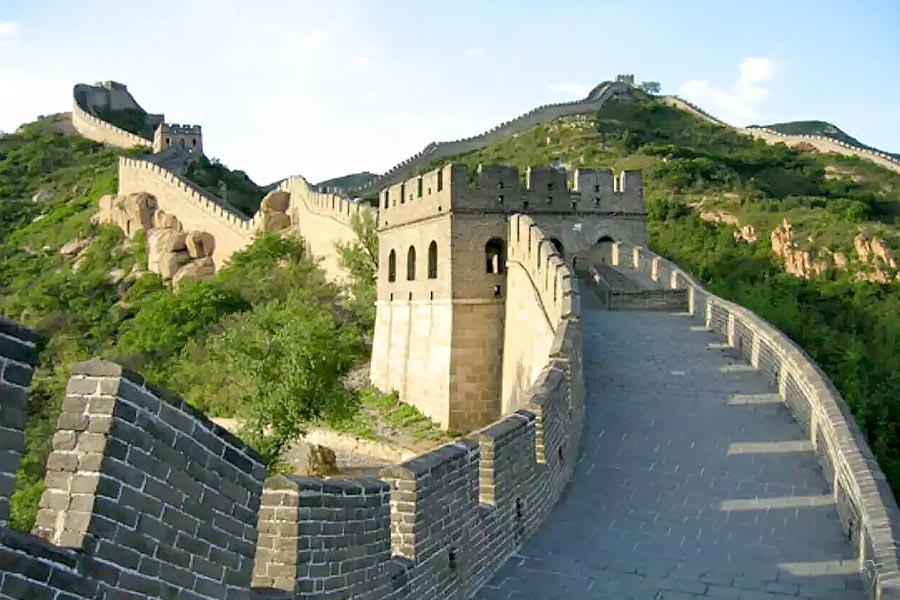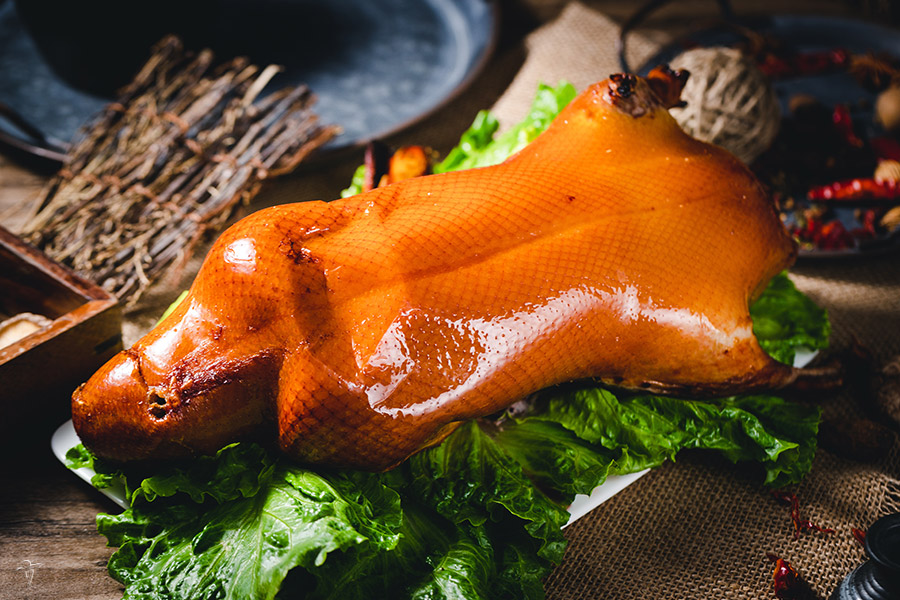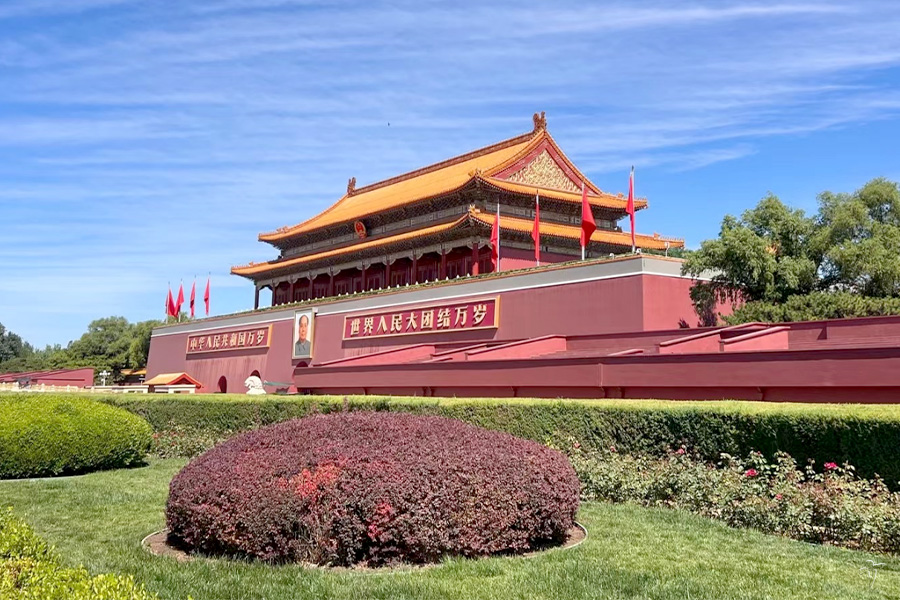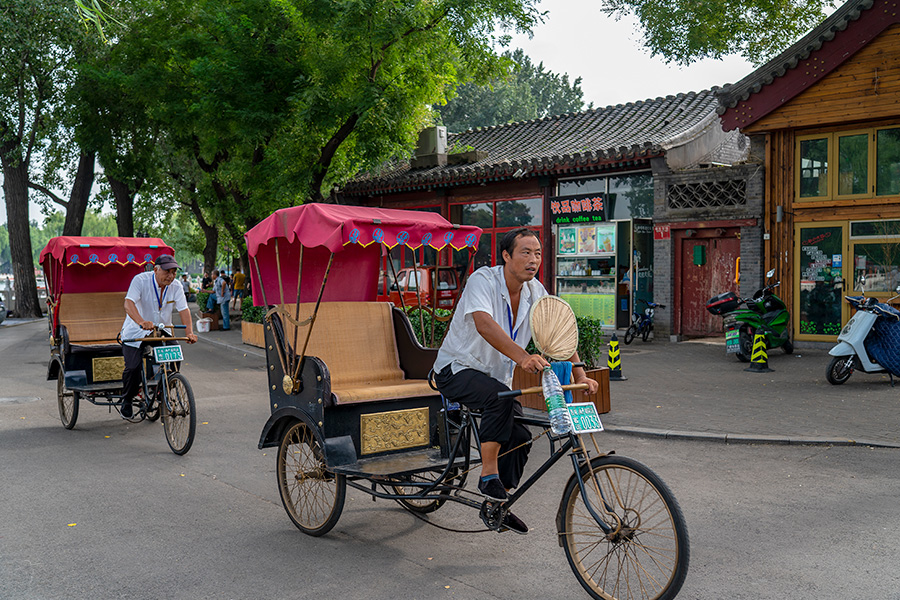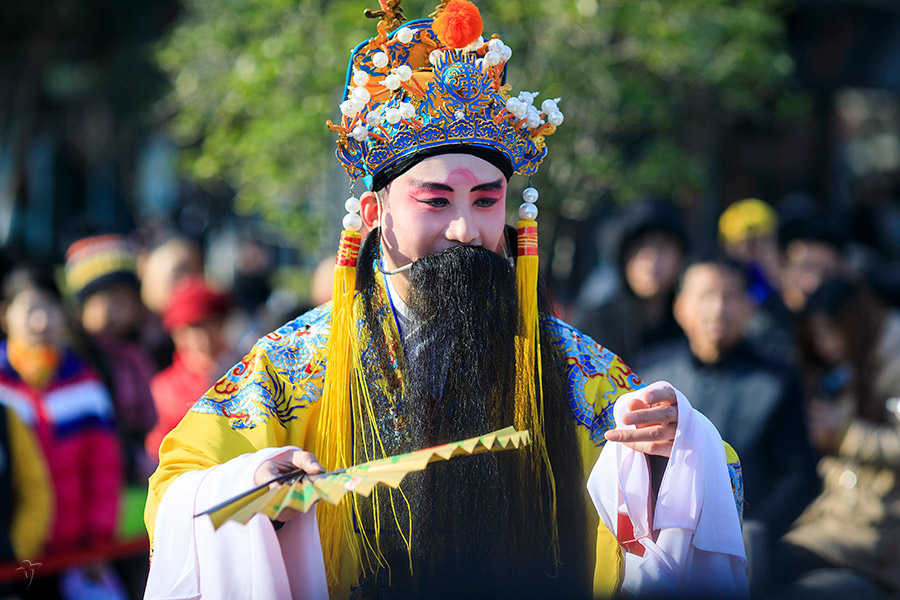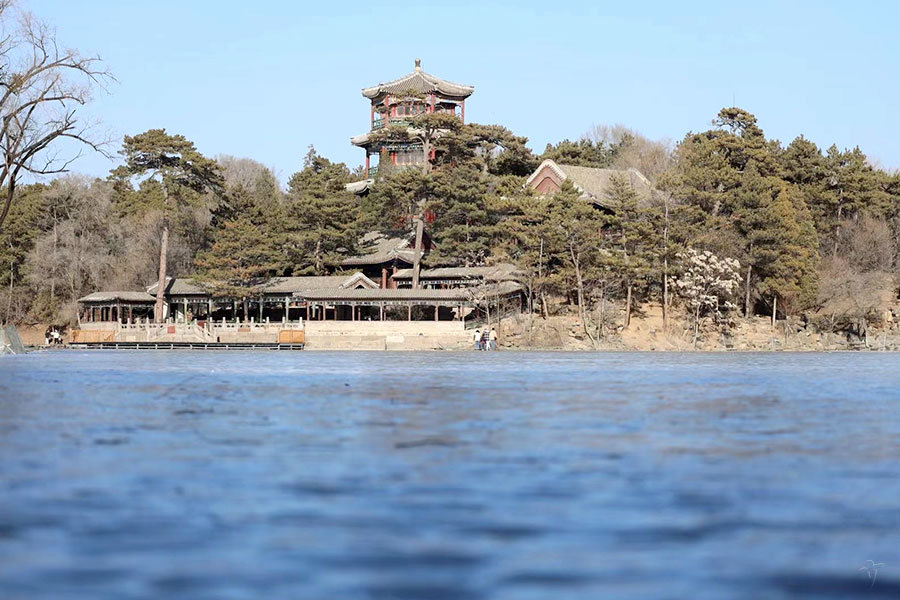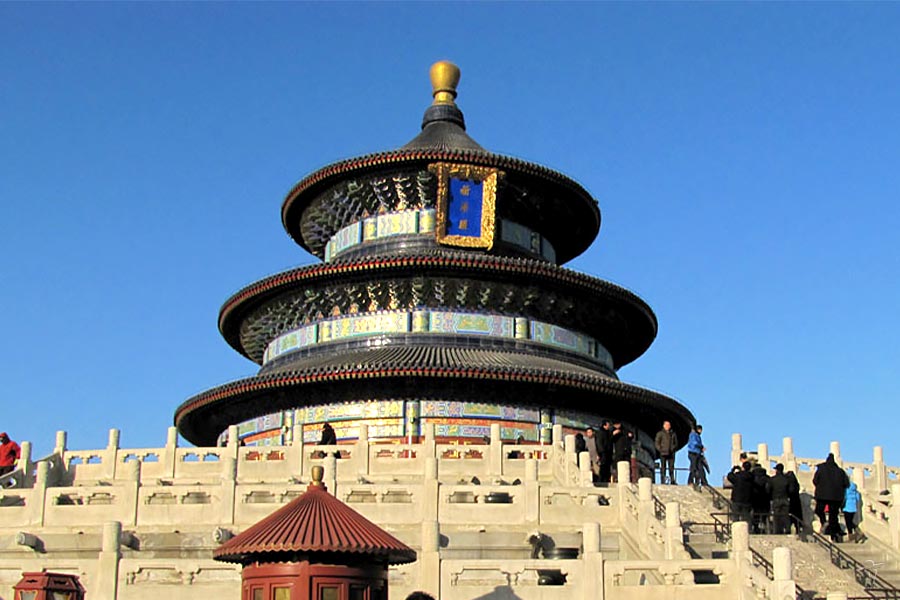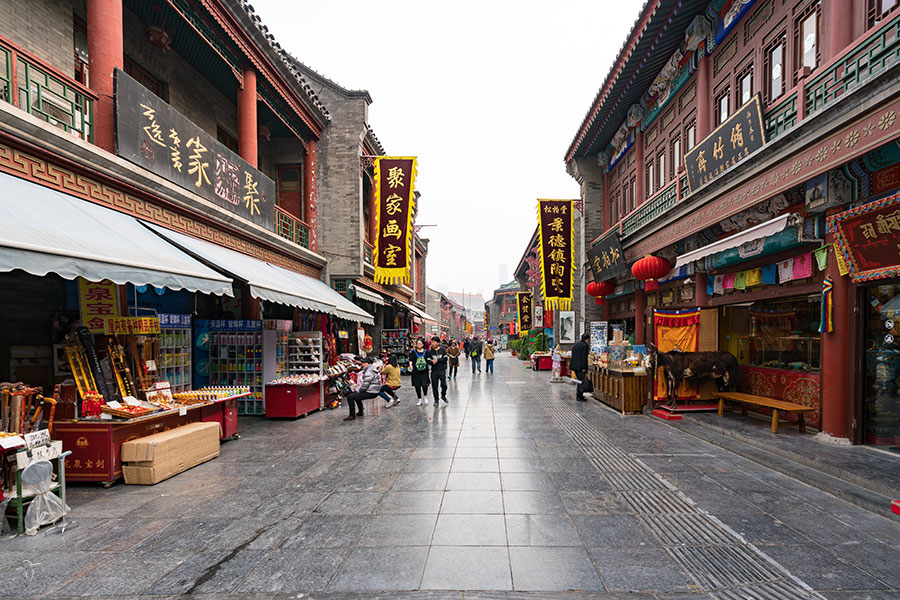Ming Tombs
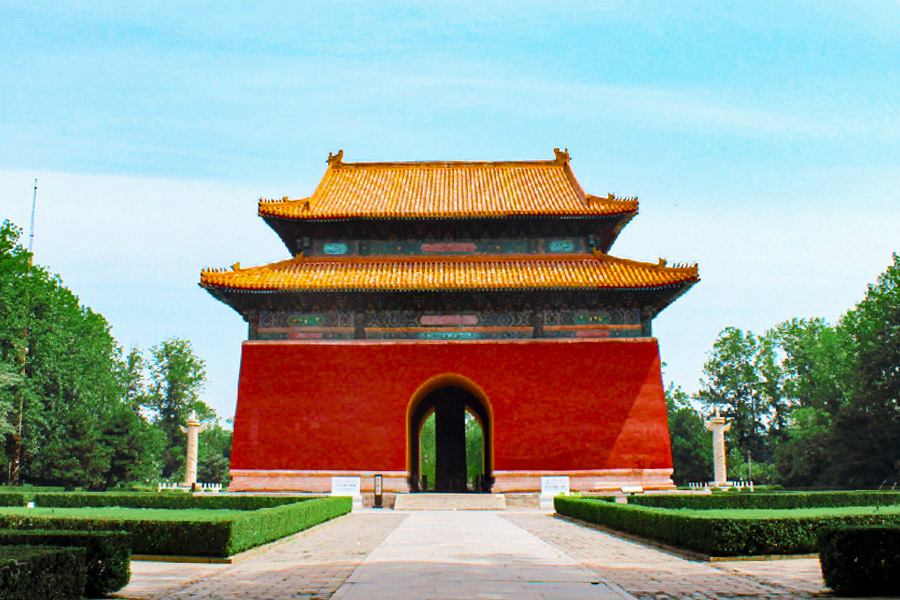
Chinese name: 明十三陵 (Ming Shisan Ling)
Location: in the valley at the south foot of Tianshou Mountain, Changping District, northwest 50 km to Beijing City.
Opening time:
- 08:00-17:30 for Sacred Way;
- 08:00-17:00 for Zhao Mausoleum;
- 08:00-17:30 for Ding Mausoleum;
- 08:00-17:30 for Chang Mausoleum, stop selling tickets at 17:00.
Tickets:
- Sacred Way: CNY30 in peak season (April-October), CNY20 in low season (November-March of the next year;
- Zhao Mausoleum: CNY30 in peak season, CNY20 in low season;
- Ding Mausoleum: CNY65 in peak season, CNY45 in low season;
- Chang Mausoleum: CNY45 in peak season, CNY30 in low season.
Best time to visit: autumn
How to get to Ming Tombs:
- take bus No.345 at Dengsheng Men (德胜门), and get off at Changping Bei Zhan (昌平北站, North Changping Station), and then transfer to bus No.314 and get off at the station of Shi San Ling Jingqu (十三陵景区, Ming Tombs Scenic Area);
- take bus No.919 and get off at Changping Dongguan (昌平东关), and then transfer to bus No.314 and get off at the station of Shi San Ling Jingqu (十三陵景区, Ming Tombs Scenic Area);
- take through tourist buses No.1 or 5 at Qian Men (前门), or No.2 at Beijing Zhan (北京站, Beijing Railway Station), or No.3 at Dong Da Qiao (东大桥, East Bridge), or No.4 at Yongding Men (永定门, Yongding Gate);
Introduction to Ming Tombs
Covering 120 square kilometers, Ming Tombs was built in a valley surrounded by mountains in the east, west and north with beautiful sceneries of green hills and clear waters, serving as the best site with greatly beneficial Chinese Fengshui (geomantic omen). Started in 1409 with the construction of Chang Mausoleum for Zhu Di (朱棣, 1360-1424, Emperor Mingchengzhu, the third emperor of Ming Dynasty as well as the one who decided to built the tombs), for over 230 years, the Ming Tombs was completed in 1644 when the Emperor Chongzhen (朱由检, 1610-1644, the last emperor of Ming Dynasty) was buried in Si Mausoleum. Within constructed 13 emperor tombs, 7 imperial concubine tombs, and 1 eunuch tomb, the Ming Tombs altogether houses 13 emperors, 23 empresses, 2 princes, more than 30 imperial concubines and 1 eunuch of Ming Dynasty (1368-1644). Being the last restingplace of 13 emperors, it is also called as Thirteen Tombs by Chinese.
As the largest existing and best preserved imperial tombs, the Ming Tombs was inscribed as the important heritage site under state protection in 1961, one of the 44 important national protected scenic spots in 1982, and the one of the 40 best tourist attractions of China by National Tourism Administration in 1991.
On the basis of construction time, the thirteen tombs are successively Chang Mausoleum (长陵), Xian Mausoleum (献陵), Jing Mausoleum (景陵), Yu Mausoleum (裕陵), Mao Mausoleum (茂陵), Tai Mausoleum (泰陵), Kang Mausoleum (康陵), Yong Mausoleum (永陵), Zhao Mausoleum (昭陵), Ding Mausoleum (定陵), Qing Mausoleum (庆陵), De Mausoleum (德陵), and Si Mausoleum (思陵), of which the Chang Mausoleum, Ding Mausoleum and Zhao Mausoleum are open to visitors.
The Sacred Way (神路)
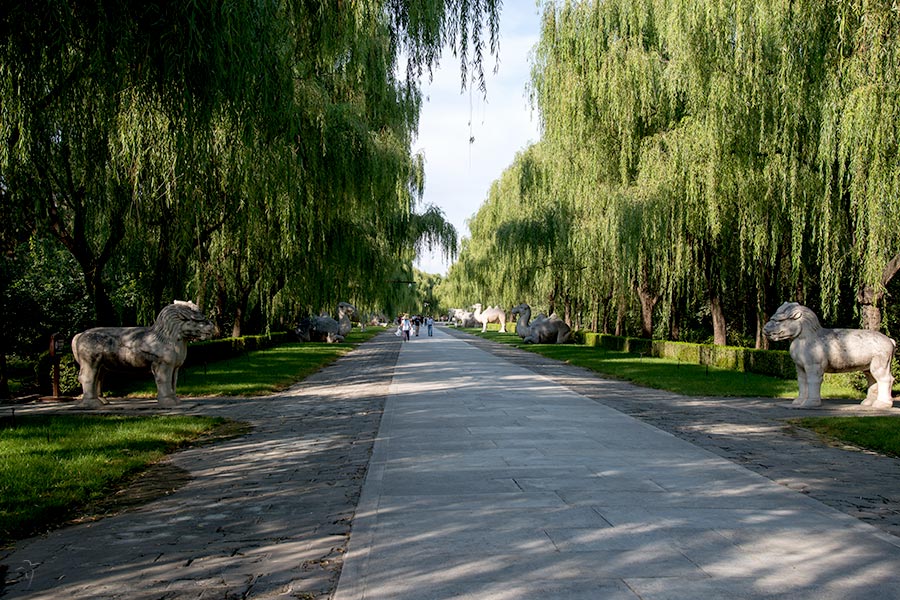
The Sacred Way is the first attraction of Ming Tombs, which is a main way leading to the thirteen imperial tombs inside the scenic area. Constructed since 1435 as the attached annex of Ming Tombs, the Sacred Way is 7 kilometers long, and starts from the stone memorial archway and ends at the gate of the Chang Mausoleum. Consisting of the Shengde Stone Memorial Archway, the Great Red Gate, Stele Pavilion, stone sculptures and the Dragon and Phoenix Gate, along the Sacred Way, the Five-arch Bridge and many other well-arranged structures were built from south to north, presenting the magnificent splendor of the imperial power of the Ming Dynasty.
The two lines of stone lifelike sculptures of 12 beasts and 6 officials on both sides are the highlights of the Scared Way that popular with visitors. The arrangement of the stone sculptures indicates that emperors could still rule anything after death. Standing or kneeling there, these stone sculptures were made in vivid shape with delicate carvings but still well preserved today, which is rare to see among all ancient Chinese tombs.
Chang Mausoleum (长陵)
Seated at the southern foot of the main peak of Tianshou Mountain, the Chang Mausoleum is the largest, earliest, and most magnificent with best preserved ground constructions among the 13 mausoleums. It is a multi-burial mausoleum for Zhu Di (朱棣, 1360-1424, Emperor Mingchengzhu, the third emperor of Ming Dynasty as well as the one who decided to built the tombs) and his empress Xu.
The ground construction of Chang Mausoleum occupies 120 000 square meters with the layout as square in the front part and round in the back. In the front square part, there are three successive courtyards. The first one is equipped with a mausoleum gate; in the courtyard, there are five kitchens in the left, five storerooms in the right and a stele pavilion in the front of the kitchens. Unfortunately, the kitchens and storerooms were all destroyed during Qing Dynasty (1644-1911), and only the stele pavilion was saved to date. The second courtyard is equipped with a Ling’en Gate, which was built in 1538. The stylobate of the gate is made of white marbles and on rails are engraved patterns of dragons and phoenixes. Even on the stone footsteps, there are also exquisite basso-relievo of surging seawaters, treasured hill, seahorses and two vigorous dragons. Another two side gates beside the Ling’en gate are also built and decorated with colored glaze, and the lofty Ling’en Hall is in the middle of the northern area, which serves for enshrining memorial tablets of emperors and empresses and sacrificing activities during both Ming and Qing dynasties. Today, it has been turned to be a museum exhibiting the achievements of Zhu Di in the fields of diplomacy, politics, irrigation works and astronomy.
Ding Mausoleum (定陵)
Seated at the foot of Dayu Mountain in the southwest of Chang Mausoleum, the Ding Mausoleum was built for 6 years from 1584 to 1590. It is the mausoleum for Zhu Yijun (朱翊钧, 1563-1620, the 13th emperor of Ming Dynasty) and his two empresses. It is the sole mausoleum in Ming Tombs which has been unearthed for scientific researches as well as for visiting with more than 3000 precious unearthed articles.
Occupying about 182 000 square meters, the Ding Mausoleum is consists of Ling'en Gate, Ling'en Hall, Gate Tower, Ming Pavilion and Underground Palace. The layout of the ground construction of Ding Mausoleum is also square in the front and round in the back, reflecting the idea of "heaven is round and the earth is square" in traditional Chinese culture. In Ding Mausoleum, there are also three successive spacious courtyards in the front, and an additional tall Gate Tower in the back. In the right front of the mausoleum gate, it is a white marble bridge, after which is a large stele pavilion, surround which are over 300 annex of sacrifice temples, butcher pavilions, and so on.
Zhao Mausoleum (昭陵)
Located at eastern foot of Dayu Mountain, Zhao Mausoleum is the last restingplace for Zhu Zaihou (朱载垕, 1537-1572, the 12th emperor of Ming Dynasty) and his three empresses. At present, it is the first mausoleum that has undergone large-scale restoration. Covering 35 000 square meters, the existing intact construction in Zhao Mausoleum are Ling’en Gate, Ling’en Hall, two side halls, a square gate tower, Ming Pavilion, and a stele without inscription in the front of the Ling’en Gate.
After the fall of the Ming Dynasty, Zhao Mausoleum was ruined for two times, one was in 1644 in the flames of war, and the other was in 1695 due to the fire caused by lightning stroke. During Qing Dynasty from 1785 to 1787, the government had the Ming Tombs repair, and Zhao mausoleum was in the project. However, the repair work just referred to the Ming Pavilion, Ling’en Gate and Ling’en Hall, and the regulation of the construction had been changed slightly and the size of architectures also reduced. In the following 200 years, there is no any other maintaining, and only the ruined Ming Pavilion and the enclosure wall survived. Till in 1987, the new restoration begun, and 3 years later in 1990, almost all main constructions had been rebuilt except for the Butcher Pavilion, kitchens and storerooms (which were completed later in 1992), and opened to the public on September 1st at the same year.
The reconstructed Zhao Mausoleum is just grand and splendid in strict imperial mausoleum regulations. In addition, in some halls and pavilions, there exhibit offerings and instruments of that era, historical materials about the emperor and empresses of the mausoleum, and the imperial tombs regulations.
Beijing tours
Quick Questions
Our team is waiting for your questions. Please feel free to ask us any questions you might have about our China package tours, Chinese culture, or the sites available. We will gladly help you with any special needs you might have and all questions, like our trip designing is completely free of charge.



